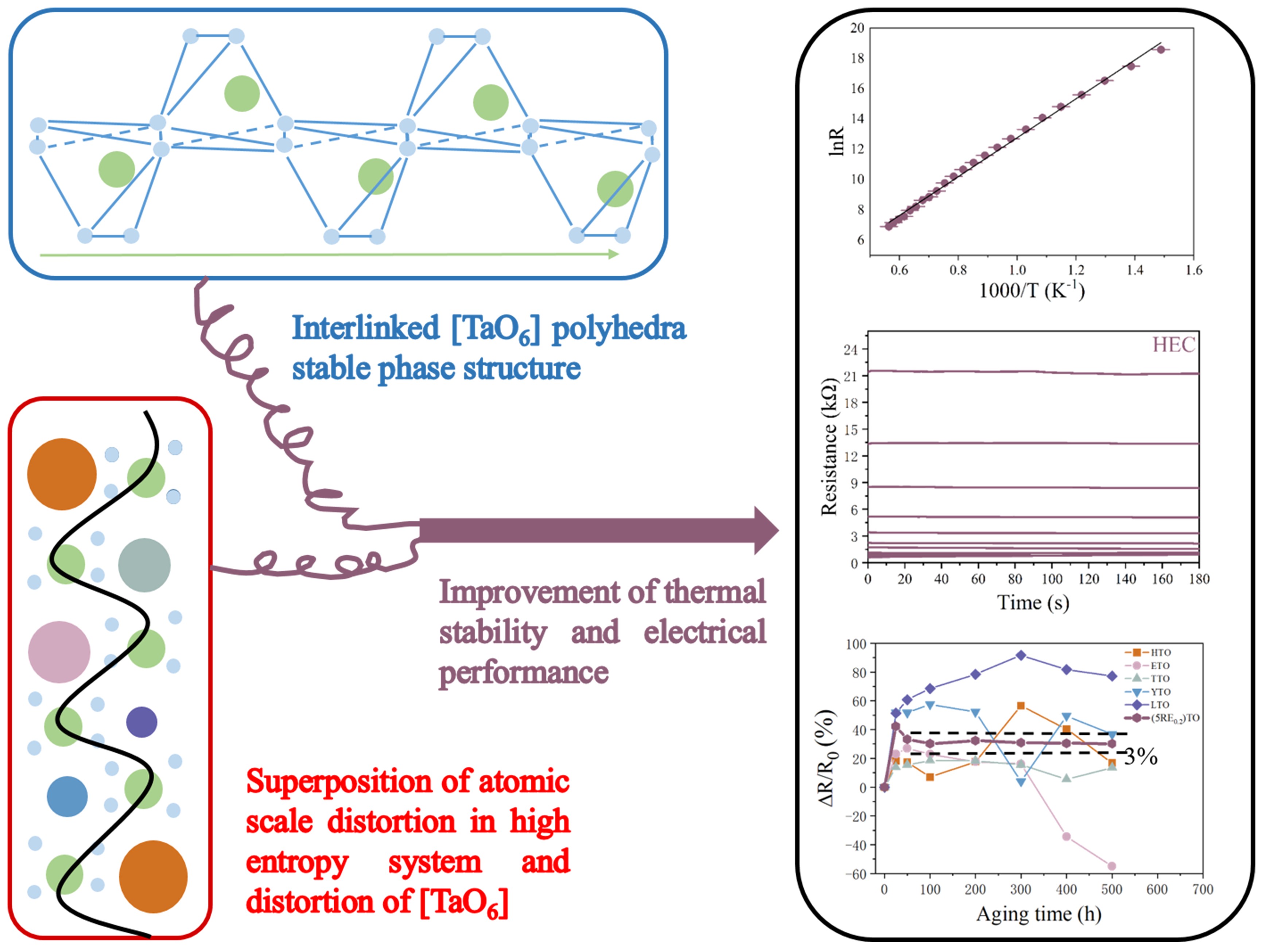Researchers Found Novel Thermosensitive Ceramic for High-temperature Application
Editor: | Jul 07,2025
With the continuous improvement of the thrust-to-weight ratio of aeroengines, the working temperature of their hot end keeps rising, which puts forward higher requirements for the performance of temperature sensors. Compared with traditional Pt resistors and thermocouples, low-cost, small-sized and fast-response, negative temperature coefficient (NTC) thermistors are regarded as the ideal choice for the next generation advanced temperature sensors. However, extreme high-temperature working conditions pose severe challenges to the structural stability and electrical stability of the thermosensitive ceramic, the core of thermistors.
To overcome the challenge, research group from the Xinjiang Institute of Physics and Chemistry of the Chinese Academy of Sciences (XTIPC) has designed a rare earth tantalate thermosensitive (RETaO4) ceramics by using a high-entropy strategy. Researchers introduced a large number of different types of [REO8] polyhedral to the system, generating a significant amount of lattice distortion, which is superimposed and compensated with the distortions of the interconnected [TaO6] polyhedra in the original structure, forming “localized alternating tension strain”. This synergistic compensation effect enhances the structural stability and electrical stability of the material. The synthesized (HoErTmYbLu)0.2TaO4 high-entropy ceramic exhibits excellent measurement sensitivity over an extremely wide temperature range (673 - 1773 K). Furthermore, it has a low relative standard deviation (RSD) of the resistance (0.0311) during continuous testing for 180 seconds. After aging for 50 hours, the aging coefficient begins to stabilize and fluctuates within only 3%. This research indicates that the high-entropy strategy holds great potential in the design and development of high-performance, high-temperature thermosensitive ceramic materials.
This result was published in the Journal of Materials Chemistry A (DOI: https://doi.org/10.1039/D5TA03160E) and selected as a hot paper.
This work was supported by the Xinjiang Tianshan Talent Training Program, the National Natural Science Foundation of China, the Natural Science Foundation of Xinjiang and the Youth Innovation Promotion Association of CAS.

Figure: The lattice distortion introduced by high entropy and the distortion of [TaO6] polyhedron superimposed together form “localized alternating tension strain” to enhance the structural stability and high-temperature stability of the material. (Image by XTIPC)
附件下载:
 (86) 991-3838931
(86) 991-3838931 lhskj@ms.xjb.ac.cn
lhskj@ms.xjb.ac.cn (86)991-3838957
(86)991-3838957 40-1 Beijing Road
Urumqi, XinjiangChina
40-1 Beijing Road
Urumqi, XinjiangChina